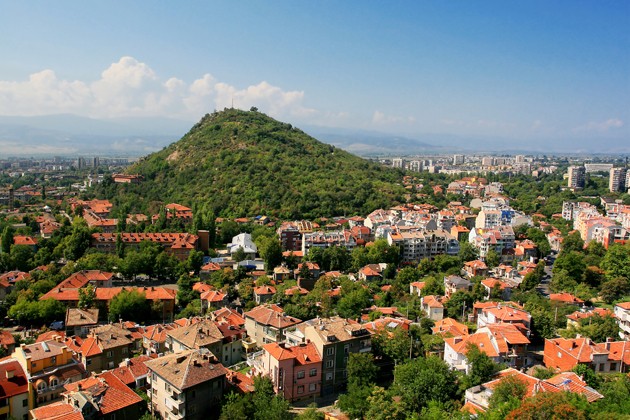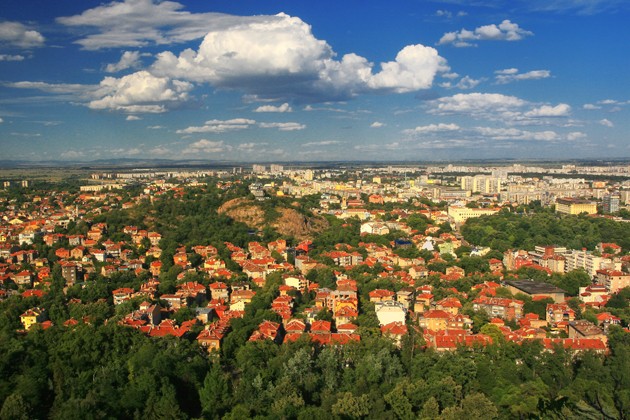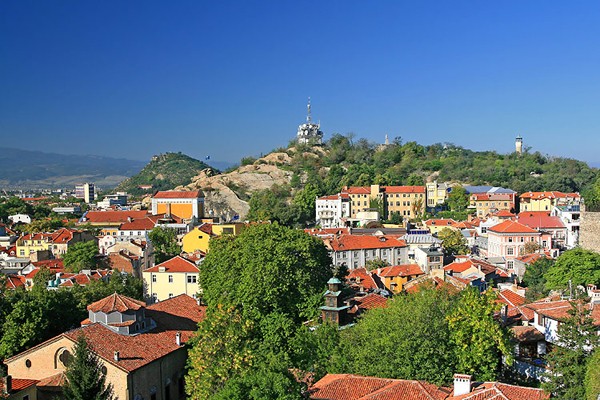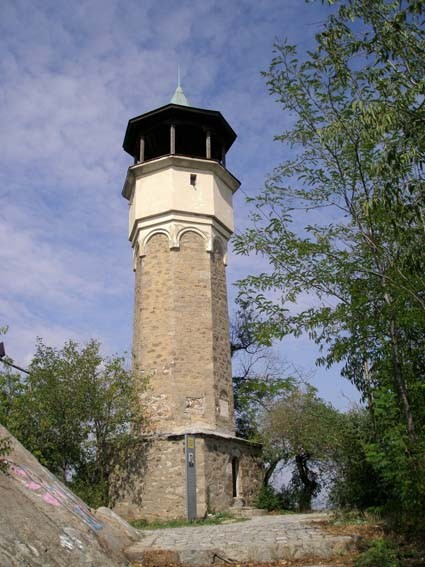The Hills
"Youth Hill" (Dzhendem Tepe) - 285.5 m above sea level, is located in the southwestern part of the Central District of Plovdiv. The territory of the hill is included in the green system of the city in its role as a park for public use. The largest in area, the tallest and furthest from the city center, Youth Hill is relatively least affected by human activity. The hill together with its low park part were declared a natural monument in 1995 by the MoEW, as the subject of protection are the unique geomorphological formations, revealed here, as well as the specific landscape, rare and protected species of flora and of fauna.
"Hill of the Liberators" (Bunardzhika) - 265 m above sea level, is located in the central part of Plovdiv and administratively belongs to the Central District. The territory of the hill is included in the green system of the city in its role as a park for public use. Until the end of the 19th century, the hill was outside the city. The hill itself was not afforested, according to the historical sources. The first planting of the bare areas of Bunardzhik Hill took place on 25 August (6 September) 1881, in connection with a decision of the City Council to take greater care of the hills. In the 1930s, the construction of paths with stone steps and railings, paved with small paving, which reached the top, began. At that time the colonnades and arches of the waterfalls, the cement slide and the restaurant above them were built. Its construction was resumed in the 1950s, together with the idea of building a monument to the Soviet army, which was built in 1956-1957. At that time, the summer theater, "Kocho Tsvetarov" Stadium with a basketball court, was built. In the 60's the numerous paths and stairs were made in the rock massifs, the rock gardens were built in the high part. Liberator's Hill is becoming an attractive place for recreation. In 1990, the NICP declared the hill a monument of garden and park art, and in 1995 the MoEW declared it a natural monument.
"Danov Hill" (Sahat Tepe) - 227 m above sea level, is located at the center of the city. Natural monument "Danov Hill" is located in the most urbanized, central part of Plovdiv, about 60-70 m west of the main pedestrian street "Knyaz Alexander I". "Danov Hill" is better known among the people of Plovdiv with its old name - Sahat (clock) hill because of the clock tower, rising there for centuries. Few people know that for some time he was also called "Vasil Kolarov". The idea for its current name - "Danov Hill" dates back to 1905, mostly due to the initiative of the mayor of the city Hristo Danov in 1881 to afforest the Plovdiv hills. Until the end of the 19th century, the hill was a bare rock with two peaks over the city and was not a popular place for recreation. Around 1910, more serious "gardening" work began on the hill, when Nikola Klisuretsa was appointed guard and gardener. Currently, Danov Hill combines the functions of a city park for public use, cultural and historical landmark (monument of park and garden art) and a protected area - a natural monument that preserves biodiversity and the unique landscape characteristic of the hill, which has become a landmark of Plovdiv as one of its main symbols. Valuable plant and animal species are also subject to protection, including Balkan endemics, species included in the Red Book of Bulgaria, rare plants for the country and others.
The next three hills form the so-called "Three Hills" (Trimontium), which consists of "Taksim Tepe" - 195 meters above sea level, "Dzhambaz Tepe" - 212 meters above sea level and "Nebet Tepe" - 207 m above sea level. On the Three Hills is situated the architectural reserve "Ancient Plovdiv" (the Old Town).
Until the 20th century, there were seven hills, but in the 1930s Markovo Tepe was partially destroyed due to the extraction of rock material for paving stones from it.















Add new comment